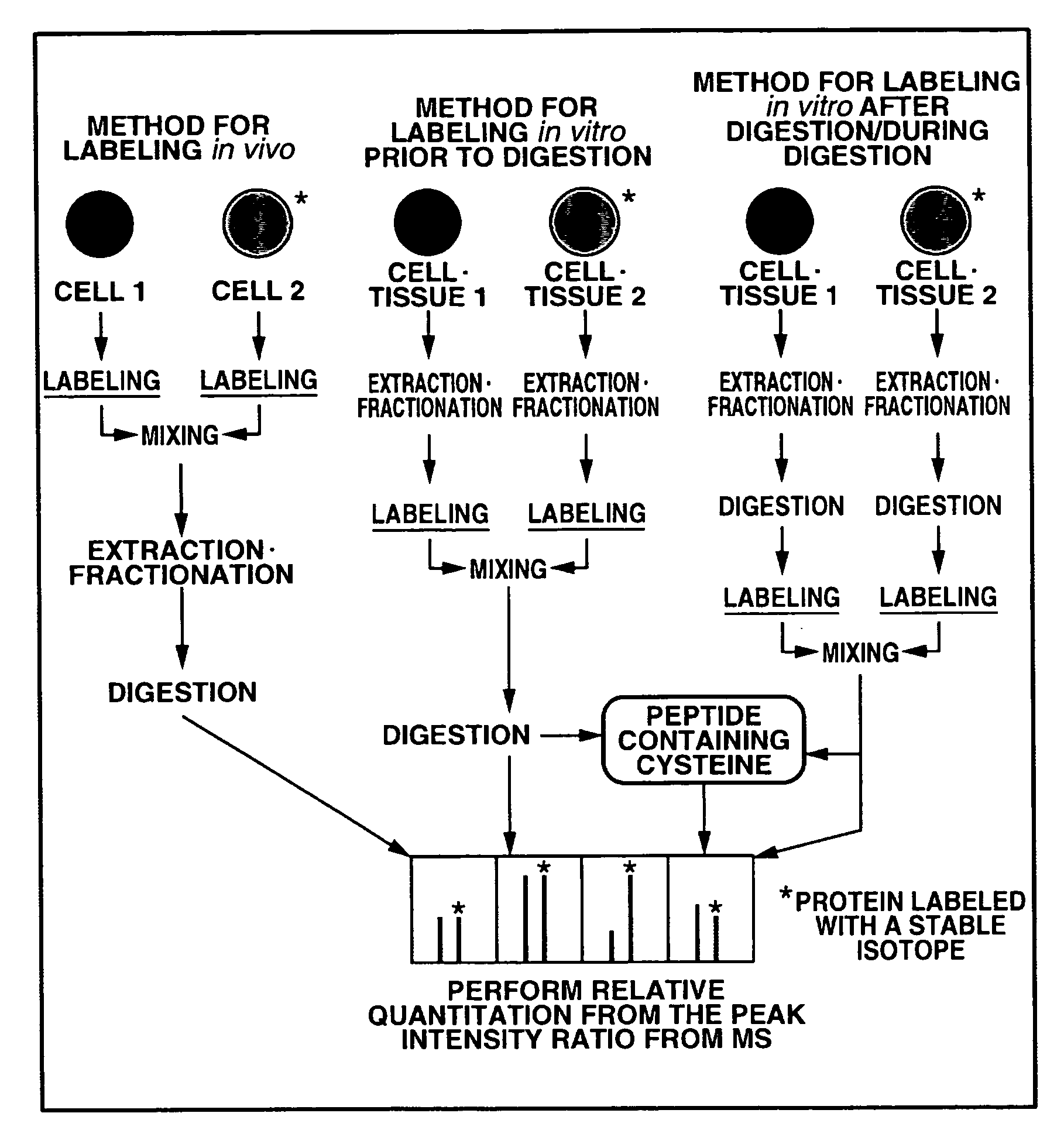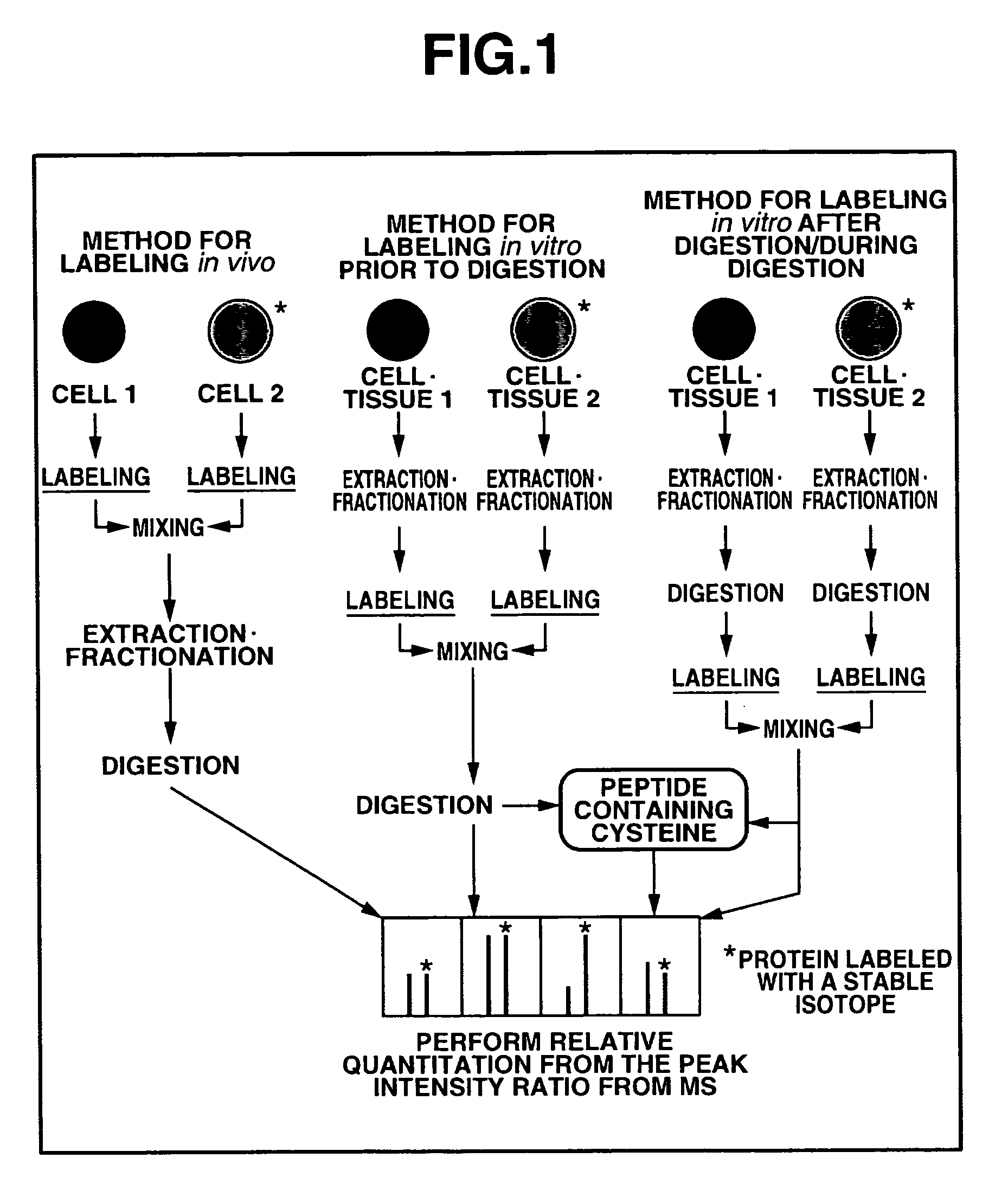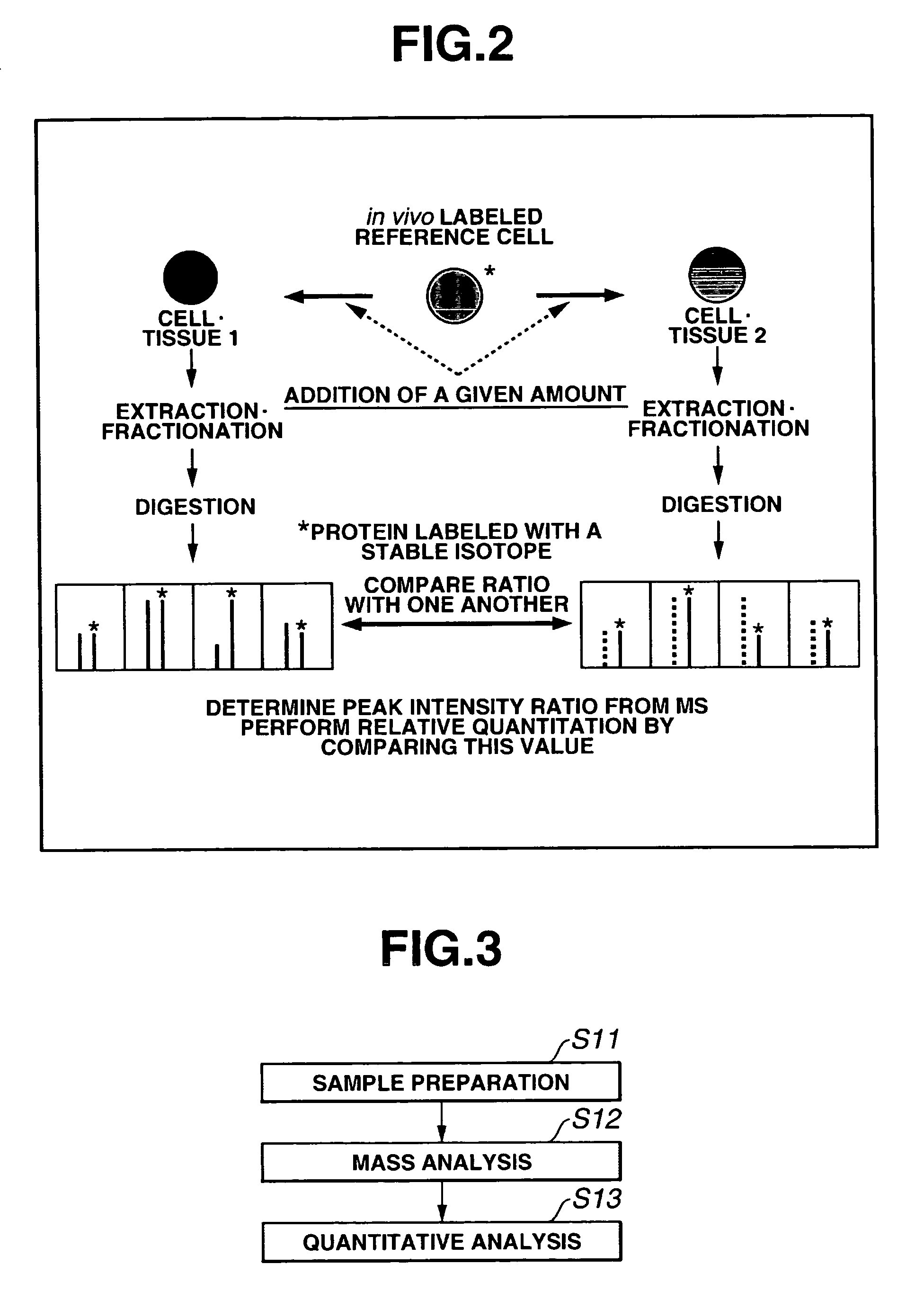Mass spectrometric quantitation method for biomolecules based on metabolically labeled internal standards
a mass spectrometric and internal standard technology, applied in chemical methods analysis, instruments, material analysis, etc., to achieve the effect of easy comparison between three or more samples, good accuracy and good accuracy
- Summary
- Abstract
- Description
- Claims
- Application Information
AI Technical Summary
Benefits of technology
Problems solved by technology
Method used
Image
Examples
first embodiment
OF THE PRESENT INVENTION
[0252]The present invention provides an internal standard substance that is a metabolically isotope labeled biological molecule, a cell containing an internal standard substance that is a metabolically isotope labeled biological molecule, a reagent containing the internal standard substance, a reagent containing the cell that contains the internal standard substance, and the like.
[0253]In the following, a method for preparing an internal standard substance that is a metabolically isotope labeled biological molecule and a cell containing an internal standard substance that is a metabolically isotope labeled biological molecule will be described in particular.
[0254]The cell containing an internal standard substance that is a metabolically isotope labeled biological molecule is a cell of the same species as the sample to be measured, preferably derived from the same tissue, in particular preferably easy to grow in a culture medium containing an isotope, but is n...
second embodiment
OF THE PRESENT INVENTION
[0289]FIG. 3 shows an overall scheme summarizing a method according to the second embodiment of the present invention for a quantitatively analyzing a protein as one example of biological molecule. As shown in FIG. 3, first, a measurement sample preparation is carried out, mass analysis is then carried out using a mass spectroscopic device. Next, the quantitative analysis method according to the present invention is executed.
[0290]The measurement sample preparation shown in step S11 of FIG. 3 comprises the steps of: isotope labeling a sample; extracting and fractionating a biological molecule from each sample and the like. Examples of the methods for isotope labeling the sample include the method of culturing in a culture medium containing an isotope labeled amino acid, the method of isotope labeling chemically or enzymically in vitro, and the like.
[0291]The method of culturing in the culture medium containing the isotope labeled amino acid comprises the step...
example 1
[0356]The following operations were carried out to prepare a cell containing an internal standard substance that was a metabolically isotope labeled biological molecule.
[0357]Mouse neuroblastoma Neuro2A was cultured. RPMI-1640 (Sigma, R-7130) containing 10% fetal bovine serum (MOREGATE, BATCH 32300102), 100 U / ml of penicillin G and 100 μg / ml of streptomycin (GIBCO, 15140-122) was used as a culture medium. As RPMI-1640, a powder culture medium not containing L-glutamine, L-lysine, L-methionine, L-leucine and sodium hydrogencarbonate was selected, and components missing from the culture medium were added (L-glutamine (G-8540 manufactured by Sigma), L-lysine (L-9037 manufactured by Sigma), L-methionine (M-5308 manufactured by Sigma) and sodium bicarbonate (Wako Pure Chemical Industries, 191-01305) were added in the amounts of 0.3 g / L, 0.04 g / L, 0.015 g / L and 2 g / L respectively. In addition, 0.05 g / L of L-leucine labeled with a stable isotope (Cambridge Isotope Laboratories, CLM-2262) w...
PUM
| Property | Measurement | Unit |
|---|---|---|
| concentration | aaaaa | aaaaa |
| pH | aaaaa | aaaaa |
| pH | aaaaa | aaaaa |
Abstract
Description
Claims
Application Information
 Login to View More
Login to View More - R&D
- Intellectual Property
- Life Sciences
- Materials
- Tech Scout
- Unparalleled Data Quality
- Higher Quality Content
- 60% Fewer Hallucinations
Browse by: Latest US Patents, China's latest patents, Technical Efficacy Thesaurus, Application Domain, Technology Topic, Popular Technical Reports.
© 2025 PatSnap. All rights reserved.Legal|Privacy policy|Modern Slavery Act Transparency Statement|Sitemap|About US| Contact US: help@patsnap.com



